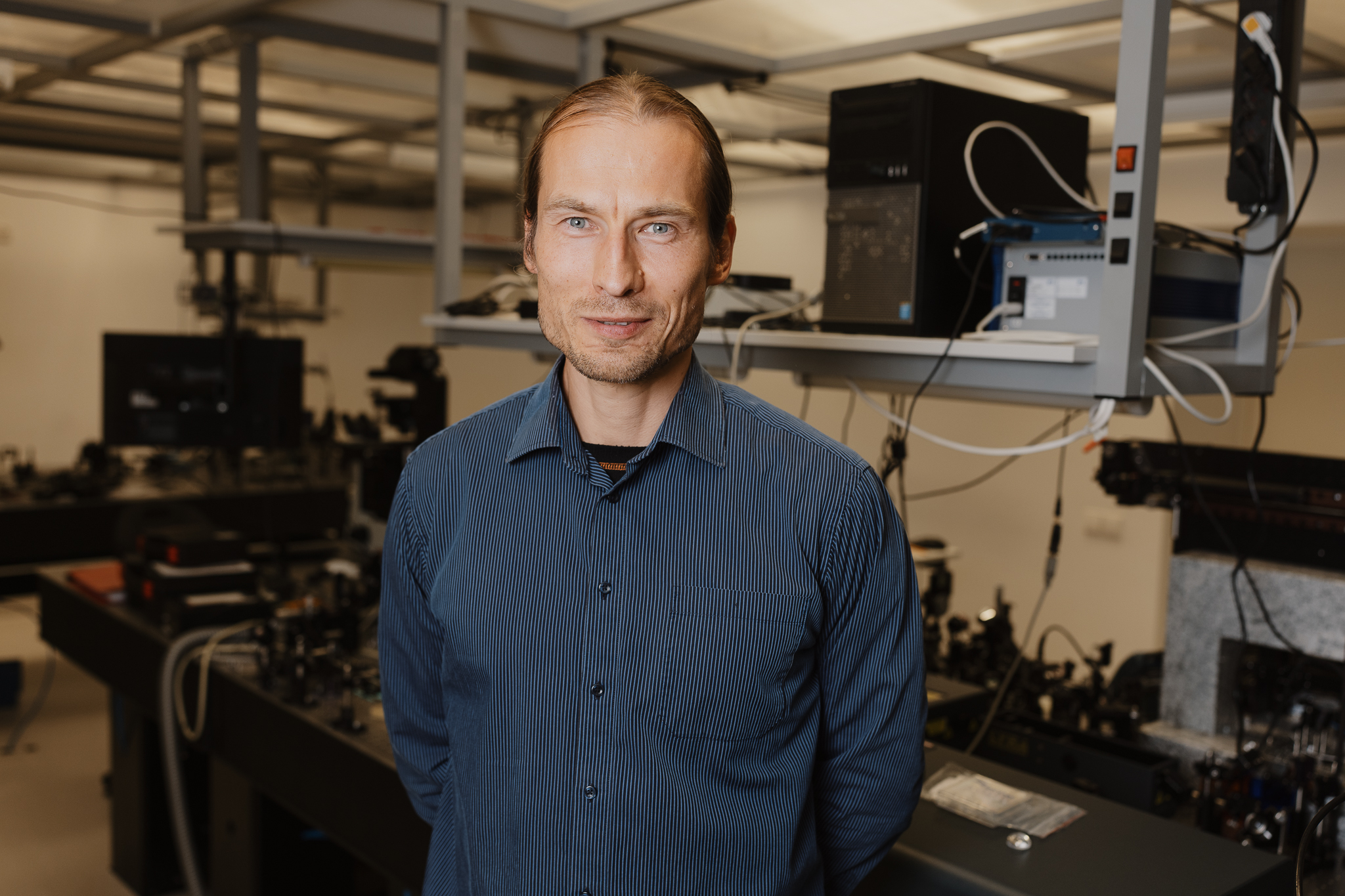The Primer on Multiphoton 3D Lithography by VU Researchers Published in ‘Nature Reviews’
 Along with world-renowned experts, scientists from the Laser Research Center (LRC) at the Faculty of Physics of Vilnius University (VU) have prepared a comprehensive guide to advanced laser-based 3D printing technology. This fundamental research by the group led by Prof. Mangirdas Malinauskas has been published in the prestigious journal ‘Nature Reviews Methods Primers’ and highlights the leadership of Lithuanian scientists in high-tech fields.
Along with world-renowned experts, scientists from the Laser Research Center (LRC) at the Faculty of Physics of Vilnius University (VU) have prepared a comprehensive guide to advanced laser-based 3D printing technology. This fundamental research by the group led by Prof. Mangirdas Malinauskas has been published in the prestigious journal ‘Nature Reviews Methods Primers’ and highlights the leadership of Lithuanian scientists in high-tech fields.
‘Our primer is the first of its kind in the field of multiphoton 3D lithography. It systematically explains all the principles behind this technology and also reveals crucial details often overlooked in original research articles. For newcomers to the field, it is difficult to grasp the vast amount of information and nearly impossible to gather everything needed from published scientific literature if they want to replicate the research in their own laboratories,’ explained Prof. Malinauskas, one of the authors.
According to him, this guide should clearly explain how this advanced technology works and how it can be applied in practice – from setting up a laboratory to optimising the use of existing equipment.
‘This guide marks the first collaboration of experts from different, often even competing, scientific camps who have come together to present a unified and coherent approach to the physical principles and applications of this technology. For the reader, this means a reliable and universally accepted source of knowledge rather than just subjective opinions. Previously, it seemed that each researcher or company had their own truth. Now, we have a single handbook where the answers do not contradict but complement each other,’ asserted the Professor.
Prof. Malinauskas notes that their group’s contribution to the field of multiphoton lithography has been evident from the first steps: ‘We were original from the very beginning because we used Lithuanian lasers emitting green light, whereas most other researchers worked with infrared lasers. Over time, our contribution became visible and influential, and that is why I was invited by ‘Nature’ to prepare this guide and assemble an international team of experts.’
In addition to VU researchers, the international team of experts included globally recognised specialists: Prof. Shoji Maruo (Yokohama National University, Japan) – a pioneer in two-photon polymerisation; Prof. Georg von Freymann (University of Kaiserslautern-Landau, Germany) – an expert with decades of experience in the field; and Prof. Julia Greer (California Institute of Technology, USA) – a renowned expert in materials engineering science.
Lithuania was represented by Prof. Malinauskas, his graduate Dr Edvinas Skliutas (alumnus of the VU Faculty of Physics), and Dr Greta Merkininkaitė (alumnus of the VU Faculty of Chemistry and Geosciences). Together with the Professor, Dr Merkininkaitė continues active research in the project conducted by the VU Centre of Excellence of Advanced Light Technologies.
Currently, researchers at the VU Faculty of Physics, collaborating with their colleagues from the VU Faculty of Chemistry and Geosciences, are developing new materials for inorganic 3D printing via multiphoton lithography. Although such studies go beyond traditional organic chemistry, post-processing methods allow for advanced solutions in micro-optics and bio-scaffold production. The advancement of this technology at both the equipment and software levels has been successfully taken over by Lithuanian high-tech companies, while scientists have become users of these solutions, reflecting a mature collaboration between science and industry and supporting the long-term sustainability of the country’s laser sector.
The strengthening leadership in this field is also reflected in international interest, evidenced by the recent addition of two postdoctoral researchers from abroad: Dr Gordon Zyla (Germany) and Dr Dimitra Ladika (Greece). In the near future, Prof. Arturo Susarrey-Arce from the University of Twente (the Netherlands) is expected to visit Vilnius, prompted by the publication of this guide. This further confirms that Lithuania is becoming an important centre of excellence in multiphoton lithography.
The primer provides an in-depth review of the theoretical and practical aspects of multiphoton 3D lithography. This advanced laser technology enables the creation of highly precise 3D structures at the nanoscale using light-sensitive materials. It opens up new possibilities in micro-optics, biomedicine, electronics, and other high-tech fields.
Students of the VU Faculty of Physics have the opportunity to gain theoretical and practical knowledge in this promising field through multiphoton 3D lithography courses and laboratory classes offered at all study cycles – from Bachelor to PhD.